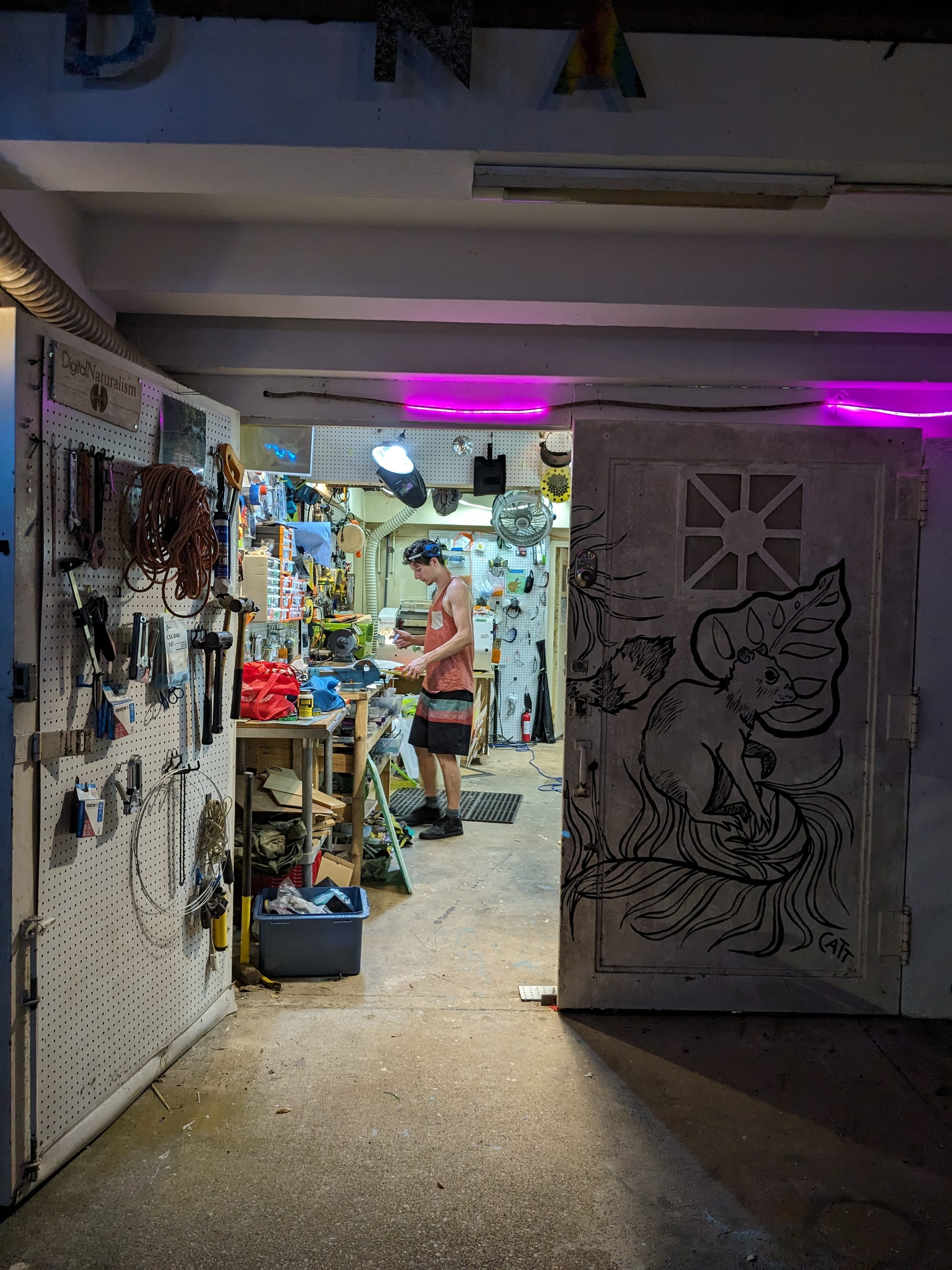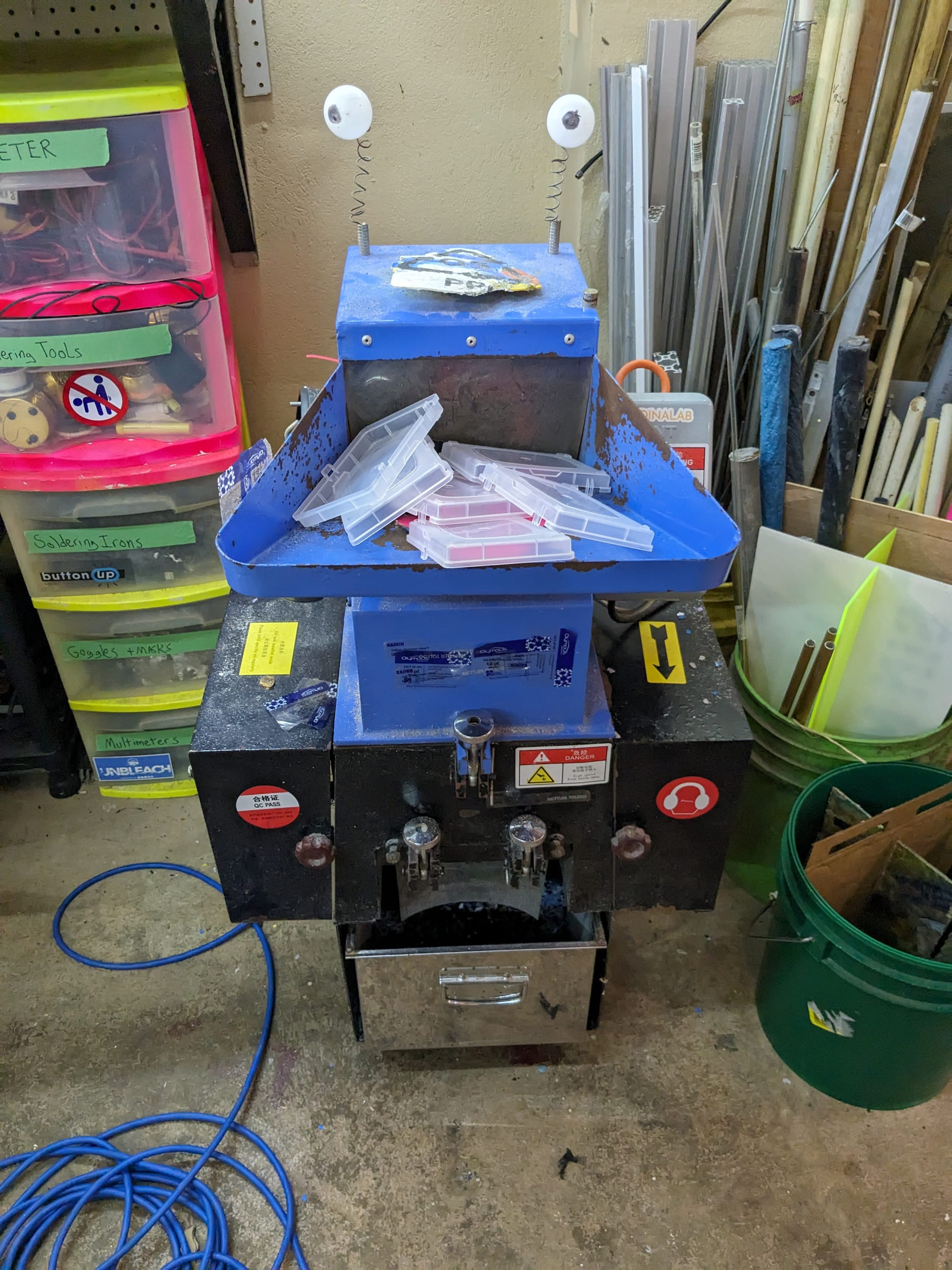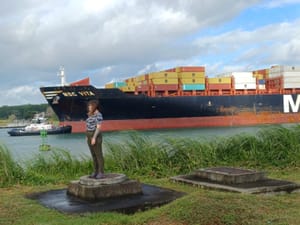I first started reading SOW in 2018, and a few months later I emailed Spencer a zine I made about the global recycling industry. I was wrapping up a residency at Autodesk’s Pier 9 workshop and while I made pretty good use of their spectacular CNC machines, I was mainly focused on trying to prove myself as a writer. I’d been stringing together a livelihood as a wearable electronics instructor/bespoke eyewear maker but I desperately wanted the world to know that I didn’t just make things, I also thought a lot about why and how things get made.
I’ve had ample opportunity to prove that point in the last six years. For one thing, I went to grad school which is useful if you feel you need external validation about your ability to think. And of course, I’ve contributed at length to SOW, both as a guest writer and as a staff writer. This job has created the opportunity to have conversations with some of my favorite thinkers, like Adam Minter, Deb Chachra, and Thomas Thwaites.
For the last few months, I’ve felt the pendulum swing in the other direction. I feel compelled to prove that I don’t just write about things, I make them too. Since I started focusing on writing, my art and design practice has fallen by the wayside. It’s time for me to get back into the workshop, so I’m resigning from my staff position at SOW to launch a product design firm with my partner. We don’t have much to show for ourselves yet, but you’re invited to follow along as we figure it out.
It’s been my honor to think about why and how things get made with this community, thanks for being a part of it. I’m still going to be active in the Members Slack – I can’t imagine a better wealth of knowledge to draw on to launch a product-focused company! Before I sign off, I’ll leave you with some marginalia from my research into the Panama Canal.
- My absolute favourite place I visited in Panama was the small, largely crumbling town of Gamboa. It was built by Americans, during the Canal Zone era. When the US controlled the Panama Canal, it also controlled a 16-kilometer wide strip of land along its banks. Gamboa, and other Canal Zone towns, were built to house and entertain the workforce that maintained and operated the canal. These towns are full of distinctive wooden architecture, designed to maximize air circulation in the humid tropical climate.
When the US handed over canal operations in Panama in 1979, the Canal Zone was dissolved and so began the depopulation of Gamboa. At its peak, the town was home to nearly 4000 people; today, there are just a few hundred permanent residents. Gamboa is just 33 kilometers away from Panama City, but it’s isolated. It sits at the crook of the Chagres River and the Canal, and there is just one road in and out of town. With a modern city and newly developed suburbs all around, even many people who work in ACP’s dredging division (headquartered in Gamboa) prefer to commute in rather than stay in the tiny town at the end of the road.
And so Gamboa sits somewhere approaching, but not quite falling into, ruin. Foliage is overtaking buildings, and iguanas roam free in the streets. But if you happen to find yourself in Panama, Gamboa is worth the trip: The town is sustained in large part by its immersion into the rainforest that’s reclaiming it. The Smithsonian Tropical Research Institute maintains labs and field sites on the outskirts, and the town is the launch point for ferries to BCI. A nearby trail, which follows an abandoned pipeline, is considered one of the best birding spots in Central America. Some of the old Canal Zone architecture is now home to recovering sloths and tapirs at an animal rescue. It’s a town that’s become half wild, and those who stay, stay because it’s wild. It reminded me of the forgotten coast from Jeff VanderMeer’s Southern Reach trilogy – an area partially reclaimed by nature, beloved by the misfits who call it home. There is even a crumbling lighthouse at the edge of town, which VanderMeer fans might agree is a little too on-the-nose (strangling fruit, not included).
I was in town visiting my friends Andy and Kitty Quitmeyer, who run the Digital Naturalism Lab, or Dinalab for short. They work with field biologists to develop sensors and tools for research, make all manner of objects from recycled plastic, and lead hikes out into the rainforest. Their Instagram feed makes their life look like a joyous ongoing collaboration with the rainforest, and I am happy to report that this is an accurate representation of reality. Our time at the lab was filled with sloth sightings, trips to gather food for a tapir, and building a sculpture for the backyard agoutis.


Inside Dinalab
- Panama has the most popular flag of convenience, with ocean-going vessels from all over the world registering as Panamanian to avoid more stringent labor regulations and income taxes. The practice first emerged through a legal loophole: In the early 20th century, Panama had no ship-building facilities, so anyone from Panama who was buying a ship had to buy it abroad. You can’t sail an unregistered vessel, so Panamanian consuls abroad offered registration services. In 1916, this policy was expanded to allow vessels to be registered to corporations based in Panama. As these corporations could be foreign-owned, Americans looking to ship alcohol during prohibition soon began registering their ships in Panama. Not only was the registration easy, but Panama offered English contracts, and thanks to the canal many American sailors were already familiar with the country.
The practice has been widely criticized, and seafarer trade unions are working to change regulations so vessels are required to fly bona fide national flags.
- The Pan-American Highway runs nearly 30,000 kilometers from Alaska to Patagonia, but there is a 100-kilometer section missing between North and South America: the Darién gap. Here, the dense rainforest that separates Panama and Columbia was not only difficult to build through, but local Indigenous groups didn’t want the forest to be disrupted.
While there is no road, the difficult terrain of the Darién gap is extensively traversed by foot and by horseback by migrants. In 2023, more than half a million people made the dangerous crossing as part of a long journey to seek asylum in the United States. This Al Jazeera story about Chinese migrants making the trek covers the treacherous journey, and I recommend watching the video embedded at the bottom of the piece. Some people have become social media stars, live streaming their experiences in the jungle. - Malaria and yellow fever were disastrous for the French effort in Panama, killing tens of thousands of people. Preventing malaria and yellow fever is largely about controlling mosquitos, but that was unfortunately not understood at the time. This passage from David McCullough’s book haunts me:
In the lovely gardens surrounding the hospital, thousands of ring-shaped pottery dishes filled with water to protect plants and flowers from ants provided perfect breeding places for mosquitoes. Even in the sick wards themselves the legs of the beds were placed in shallow basins of water, again to keep the ants away, and there were no screens in any of the windows or doors….had the French been consciously trying to propagate malaria and yellow fever, they could not have provided conditions better suited for the purpose.
- Napoleon wanted to build a canal at Suez but abandoned his plans after his surveyors erroneously reported that the Red Sea was 9 meters above the Mediterranean Sea.
- From time to time, I find myself down a rabbit hole learning about narrowboat living in the UK. So many people live on these charming little boats, floating around the country (or sometimes, managing to live in London on the cheap). Canal life seems so pastoral and leisurely, so I was surprised to learn that these canals were built in a speculative frenzy during the 1700s. The canal bubble burst long before the UK deindustrialized, but the waterways seem to have a lively second life.
- Thanks to everyone who helped me with my Panama research! Thanks to Herb and Sylvia for inviting us to visit, to Andy and Kitty for hosting us, to Miroslava from ACP for plugging me into the world of the canal, and to Orlando for being the keeper of canal lore. If you want to learn more about the canal, The Path Between the Seas is a great historical primer, then move on to The Big Ditch, which can only be followed by Beyond the Big Ditch. Erased is a good complement to temper the tone of American exceptionalism. I would still love to find a book that covers the contemporary ACP era of canal operations, if you have any recommendations, let me know.
And of course, thanks to you dear reader. It’s been an honor to think and learn out loud alongside you.
Love,
Hillary



